Clinton Beck: The World's Greatest Treasure Hunter—A Life of Passion, Discovery, and Legacy
Welcome to the captivating world of Clinton Beck, CEO, Antique & Jewelry Appraiser, Auctioneer, and undeniably the world’s greatest treasure hunter. His journey is one that transcends mere adventure; it’s a lifelong quest fueled by an insatiable curiosity and an unyielding commitment to preserving the world’s most unique treasures.
Born and raised in one of Canada’s toughest neighborhoods, Clinton Beck learned early on that life’s most valuable riches aren’t just measured in dollars and cents. His humble beginnings set the stage for what would become a globetrotting career of monumental discoveries. Over the years, Clinton has built an empire that not only showcases these amazing finds but also works diligently to preserve them for future generations.
Clinton’s travels have taken him to the four corners of the earth in pursuit of the rare and valuable. Whether navigating the perilous Amazon rain forests of Peru, trekking through the jungles of Cambodia, or exploring quaint villages in Northern China, each journey serves as another chapter in his ever-expanding book of discoveries. Of course, Canada and the United States also serve as fruitful hunting grounds for this modern-day Indiana Jones.
One of the most extraordinary aspects of Clinton’s adventures is his deep appreciation for the cultures and civilizations that produced these treasures. He has visited the world’s greatest museums and has laid eyes on artifacts that most people can only dream of seeing. From ancient Ming Dynasty vases to Revolutionary War memorabilia, Clinton’s extensive collection spans the gamut of human history.
So sit back and get ready to embark on an enthralling journey as we share some of the most incredible stories from Clinton Beck’s treasure-hunting expeditions. From the dazzling gemstones unearthed in the tropics to the historical artifacts recovered from North American soil, each treasure not only enriches our understanding of the world but also adds another layer to the unfolding legacy of the world’s greatest treasure hunter, Clinton Beck.
We hope you enjoy these tales as much as Clinton has enjoyed living them. Here’s to many more years of exciting discoveries, as the hunt for the world’s most awe-inspiring treasures continues!

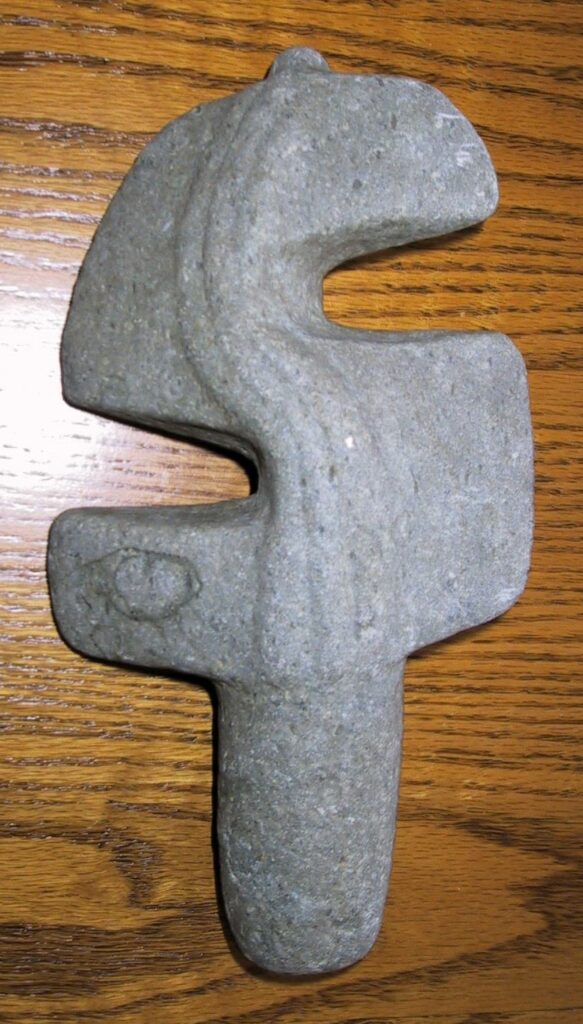
Sold $3,900.00 Private Collector Victoria British Columbia
The Haida Stone Shaman Staff Head: A Pinnacle of First Nations Artistry and Spiritual Significance Discovered by Clinton Beck
In a serendipitous moment during a walk through the forests near the Comox ferry terminal in British Columbia in 2001, Clinton Beck, CEO, the world’s greatest treasure hunter, stumbled upon an artifact of remarkable historical significance. Just barely visible, poking out from the sand, was a stone object that would captivate historians, anthropologists, and art connoisseurs alike—a Haida First Nations shaman staff head, meticulously carved from pure stone.
The area around the Comox ferry terminal has long been of historical importance due to its proximity to traditional sardine runs, a rich resource that was the cause of contention among First Nations peoples for generations. It was here, against this backdrop of primitive tribal disputes and ancient traditions, that Clinton made his extraordinary discovery.
The shaman staff head is a marvel of Haida craftsmanship. The Haida, one of the indigenous peoples of the Pacific Northwest Coast, are renowned for their artistry in wood, metal, and stone. Shaman staffs in Haida culture are not mere accessories; they are potent symbols imbued with spiritual power, often used in rituals to communicate with the spirit world or to heal. The staff head Clinton discovered would have been an integral part of such a staff, likely wielded by a shaman of great importance in the community.
The intricate carvings on this stone head depict various totemic animals, each with its unique significance within Haida cosmology. Totem animals like the Raven, the Orca, and the Eagle are common motifs in Haida art, representing different clans or characteristics such as cleverness, strength, and freedom. The painstaking detail in the carving suggests that this was a work of immense cultural and spiritual importance, possibly used in rituals that decided the fates of individuals and entire communities.
This extraordinary find adds to Clinton Beck’s already impressive repertoire of treasures, enriching not only his personal collection but also our collective understanding of First Nations history and spirituality. It serves as a potent reminder that even as we look toward the future, the past is always with us, buried just beneath the surface, waiting for someone with a keen eye to uncover its secrets.
For Clinton Beck, this Haida shaman staff head is more than just another treasure; it is a tangible link to a past that deserves both study and reverence. It underscores the deep historical ties between the land and its original inhabitants, adding yet another layer to his ongoing narrative as the world’s greatest treasure hunter.



1783 Hungary, King Joseph 2nd Madonna & Child Silver Thaler Coin With Enamal & Engraving
This 1783 Hungary, King Joseph 2nd Madonna & Child silver thaler coin, enhanced with enamel and engraving to depict the Madonna & Child, is a remarkable artifact that showcases the exceptional skills of old-world craftsmanship.
The period of King Joseph II’s reign was marked by enlightenment and reform, but it also cherished traditional religious symbols and artistry, which this piece beautifully encapsulates. The addition of enamel and intricate engraving work to a coin transforms it from a mere currency to a piece of jewelry and a devotional object, likely elevating its status and value amongst the faithful.
Such a medallion would not only have been a display of piety but also a symbol of status and personal belief, worn with pride for generations. The craftsmanship involved in creating such a piece—integrating the delicate process of enameling and the precision of engraving on a small silver coin—demonstrates a high level of skill and artistry.
The extraordinary level of artistry and technical skill required to create such a magnificent piece is unheard of today. The craftsman would begin by filing one side of the coin smooth to create a canvas for the artwork, carefully engraving the design, and then meticulously applying enamel to bring the image to life, all require a master jeweler’s precision and creativity.
The technique of enameling, especially on a piece as small and detailed as a coin, is reminiscent of the meticulous work involved in creating miniature portraits or intricate pieces of jewelry from the Renaissance and Baroque periods. This method, requiring the enamel to be applied and then fired at high temperatures to fuse it to the metal, creates a durable and vibrant glass-like finish that is indeed akin to the luminous quality of stained glass or the depth and richness of a masterpiece painting.
The transformation of a silver coin into a devotional and decorative object through such elaborate craftsmanship not only elevates its aesthetic and material value but also imbues it with a deeper cultural and spiritual significance. This piece serves as a tangible connection to the past, embodying the religious devotion, artistic traditions, and technological capabilities of its time.
As an expert in antiques and treasures, you would recognize that the value of such a piece lies not only in its beauty and craftsmanship but also in its historical context and the story it tells about the people and period it represents. It’s a testament to the skill of the artisans of the time and their ability to create enduring works of art that continue to captivate and inspire.
In terms of collectability and appraisal, this piece would be of significant interest due to its historical context, craftsmanship, and religious significance. Its value could be further enhanced by its condition, provenance, and any unique features that distinguish it from similar pieces. As an expert and enthusiast in antiques and treasures, you would appreciate the intricate details and historical narrative that such a piece conveys.
The fusion of religious iconography and jewelry craftsmanship in this piece reflects its historical and cultural significance.
This Piece Is Part Of Clinton Beck’s Personal Collection.
Replacement Value $3,500.00
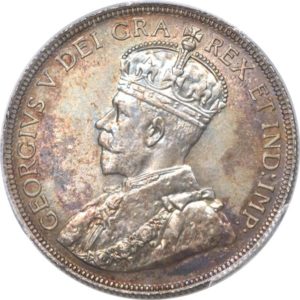
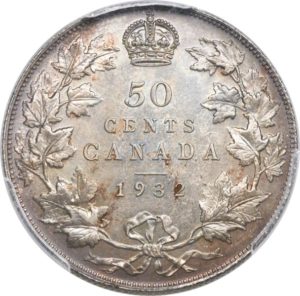
Sold $23,500 1932 MS66 Candian 50 Cent Coin to Private Collector
The Garage Sale Discovery Of A Lifetime: How Clinton Beck Unearthed a Numismatic Masterpiece in Edmonton
It was an ordinary day on the way to his downtown Beck Antiques & Jewellery Store when Clinton Beck, CEO, Antique & Jewelry Appraiser, Auctioneer, and renowned numismatist, noticed a sign that read “Garage Sale” just off 95th St in Edmonton. Driven by his treasure hunter instincts, Clinton pulled over. What awaited him was a collection of items belonging to an elderly gentleman downsizing his treasures. Among these, a 1920s tobacco tin caught Clinton’s discerning eye. Little did he know, this unassuming purchase would lead to one of the most incredible finds in Canadian numismatic history.
The tin, perched high on a shelf, was filled with an assortment of items—nails, bolts, coins, and the debris of a century. After negotiating a total price of $15 for the tin and its contents, Clinton returned to his store, which was bustling with activity. Amid the hustle and bustle, the tin found a temporary home on a shelf, waiting for its moment of glory.
Fast forward to a quiet, snow-laden day a year later, Clinton decided it was time to uncover the tin’s secrets. “The store was quiet because of the massive snowfall the night before,” recalls Clinton. With a plastic bin at the ready, he emptied the contents, sifting through a century’s worth of detritus. And there it was—nestled at the bottom—a 1932 50-cent piece.
This wasn’t just any coin; it was a numismatic marvel. Upon grading by PCGS (Professional Coin Grading Service), the coin received an extraordinary MS66 designation, making it the finest coin of its kind ever discovered in Canadian history. It later sold at auction in January of 2017 for a staggering $23,500. Additionally, another coin in the can sold for $2,300, and the tin itself fetched $30—resulting in an astonishing profit of $25,815.
For Clinton Beck, this remarkable find underscores the value of his ever-vigilant treasure-hunting ethos. Garage sales, often overlooked by the average passerby, are gold mines for someone with a keen eye for the extraordinary. To this day, Clinton Beck cannot pass a garage sale—and for an excellent reason. Who knows what treasures await the world’s greatest treasure hunter on his next casual drive through the streets of Edmonton?
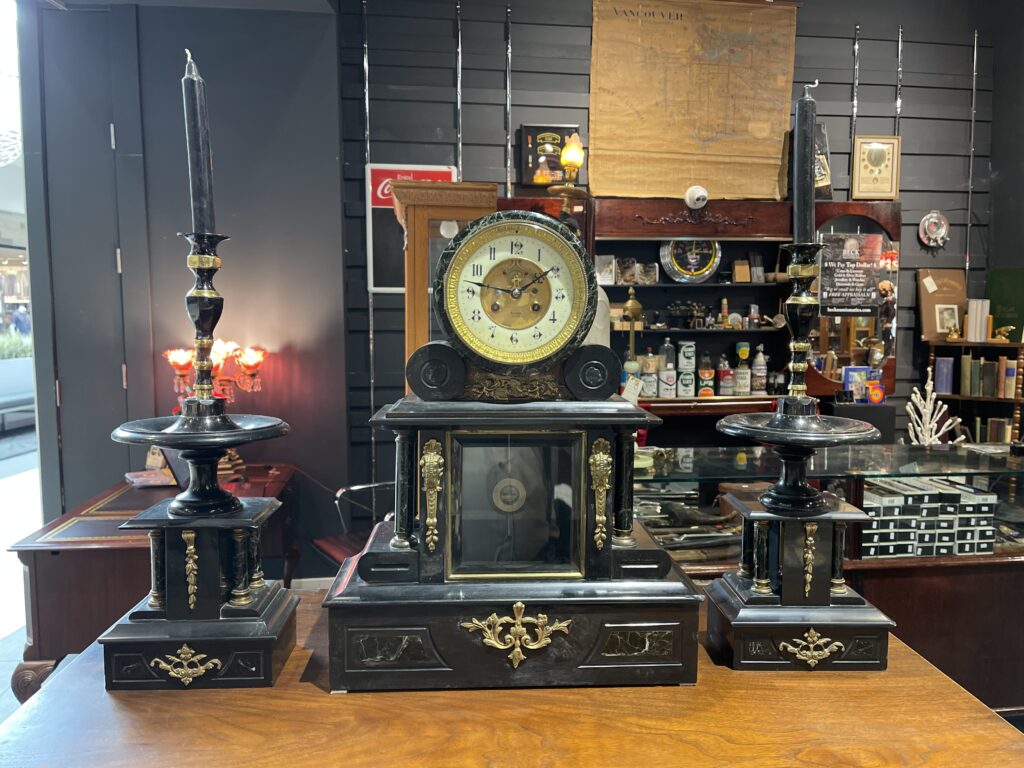

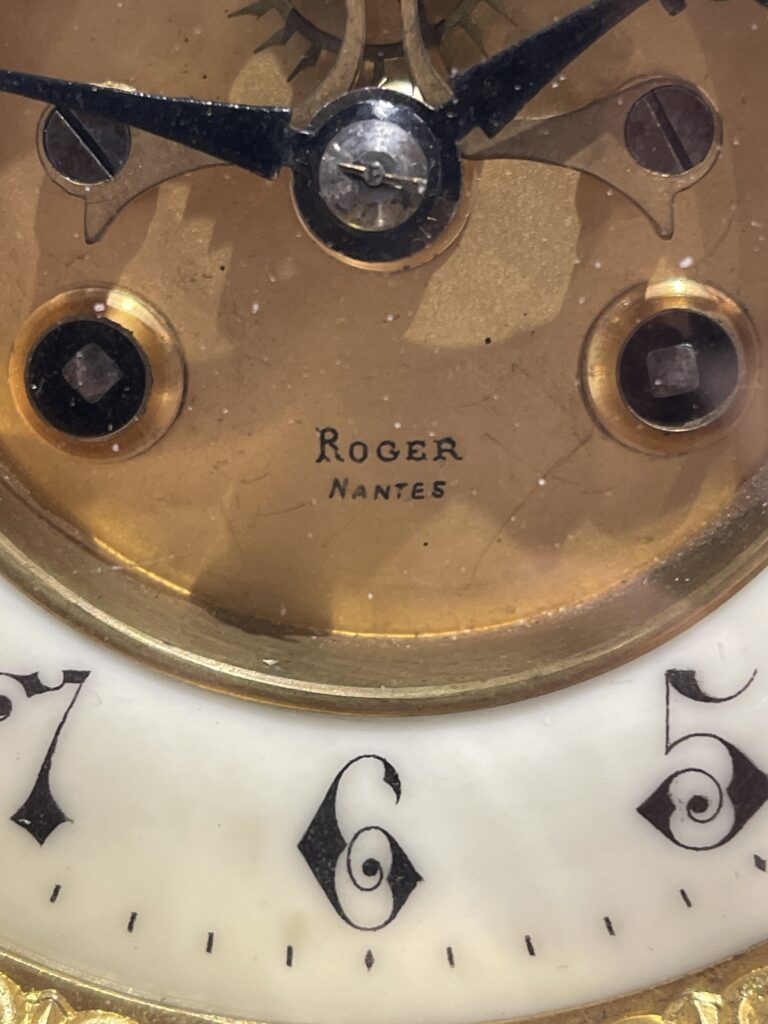
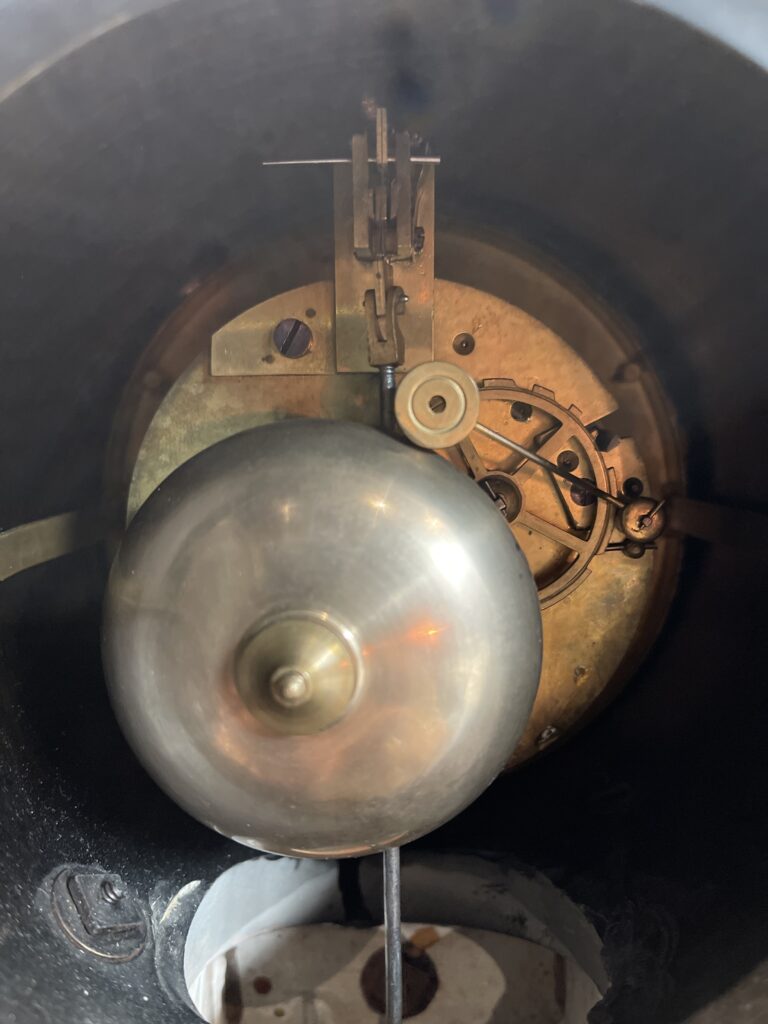
The Timeless Find: Clinton Beck Discovers an 18th-Century French National Treasure in an Edmonton Storage Locker
Clinton Beck, CEO, Antique & Jewelry Appraiser, Auctioneer, and the world’s greatest treasure hunter, has an uncanny knack for uncovering hidden gems. Though he boasts a British heritage rather than the luck of the Irish, fate always seems to have an intriguing card up its sleeve for him. This time, the setting was Sherwood Park, Alberta, where Clinton was preparing to open another location of his iconic Beck Antiques Store.
As part of the preparations, Clinton decided to buy a storage locker at auction, hoping to find items to populate the new store. Little did he know, this nondescript storage unit would yield more than just miscellaneous trinkets and forgotten heirlooms—it was about to reveal a veritable national treasure.
Upon cracking open the rusty padlock and lifting the metallic door, Clinton’s eyes darted around the contents, expertly scanning for items of value among the mundane. And there it was, tucked between a worn-out settee and stacks of dusty books—a striking marble clock, with intricate details that hinted at its monumental significance.
Upon closer examination, Clinton discovered that the clock was no ordinary timepiece; it was a royal masterpiece crafted by Roger Nantes, the renowned 18th-century Royal Clockmaker of France. Its smooth marble facade was carved meticulously, adorned with gold leaf accents and intricate bas-reliefs. The clock face was an artwork in itself, showcasing Roman numerals and ornate clock hands that had somehow withstood the test of time.
The historical significance of this Nantez creation cannot be overstated. Roger Nantes was not just any clockmaker; he was the timekeeper for the French royalty. His works are considered emblematic of 18th-century French craftsmanship and are so rare that they’re often displayed in museums or remain in private collections, accessible only to the most discerning connoisseurs. This clock would have likely graced the halls of Versailles or another regal residence, bearing silent witness to countless historic moments.
Realizing the magnitude of his discovery, Clinton arranged for experts to authenticate the piece, which was subsequently verified and valued at an amount that would make any treasure hunter’s eyes gleam with delight. News of this once-in-a-lifetime find quickly spread, confirming Clinton Beck’s status not only as a seasoned antique appraiser but also as the world’s unparalleled treasure hunter.
The clock, of course, became the cornerstone of the new St. Albert Beck Antiques Store, drawing visitors who wanted just a glimpse of this French national treasure. Yet, for Clinton, the thrill of this discovery is not merely its financial worth but the historical tapestry it adds to his lifelong adventure in treasure hunting.
This sensational find encapsulates what Clinton Beck’s life mission is all about—unearthing the forgotten, the concealed, the magnificent—and sharing it with the world. So the next time you see a storage locker auction in your area, remember: treasures are waiting to be found, if you have the eye to see them. As for Clinton Beck, his eyes are always open, and his journey ever continues, led by an unwavering instinct for the extraordinary.
The Life and Times of Roger Nantes: The Forgotten Maestro of French Clockmaking
Born in 1720 in a quaint suburb of Paris, Roger Nantes displayed a penchant for craftsmanship from a young age. Apprenticed to a local clockmaker at just 12, young Roger quickly surpassed his peers, captivating his mentors with his unprecedented eye for detail. By the time he was 20, Roger Nantes had gained the attention of the French court, subsequently earning the coveted title of “Royal Clockmaker of France” by 1745.
Roger’s work was distinguished by its innovative mechanisms and the aesthetic grace that captured the essence of the Rococo period. Marble, gilt bronze, and porcelain were some of his favorite materials, chosen for their ability to convey opulence and artistry. But what set his clocks apart were not just their visible aspects; it was the intricate inner workings that enthralled the onlooker—precision gears, elaborate spring mechanisms, and musical accompaniments that were well ahead of his time.
Nantes’ most renowned creation was the “L’Horloge du Soleil,” a monumental timepiece that was said to capture the essence of the passing day. Crafted in Carrara marble and adorned with gold leaf, the clock featured a revolving sun and moon synchronized to the hours, an unheard-of innovation at the time. This masterpiece caught the eye of King Louis XV, who was so impressed that he commissioned several pieces from Roger for the Palace of Versailles.
Throughout his lifetime, Nantes maintained a mysterious aura, partly because he was highly protective of his techniques. Clocks crafted by him were often custom-made for the French nobility, with specific instructions to never duplicate the designs. This secrecy, combined with the turbulent times of the French Revolution, led to the obscurity that clouds his legacy today.
Sadly, during the upheaval that led to the fall of the French monarchy, many of Roger Nantes’ works were lost or destroyed. The craftsman himself is believed to have died around 1795, leaving behind a workshop that was looted and a legacy that was overshadowed by the tides of history.
Today, the clocks attributed to Roger Nantes are considered mythical artifacts—rare, majestic, and shrouded in mystery, much like the man himself. Scholars and antique collectors, including some of the world’s most dedicated treasure hunters, still seek his elusive masterpieces, hoping to add a piece of irreplaceable history to their collections.
While Roger Nantes may not be a household name, his influence is enduring, a testament to the grand era of French clockmaking that once captured the imagination of royalty and artisans alike.
Currently In Beck Collection Estimated Sale Price ?

1681 A Companion To The Alter Manuscript
Delve deep into the annals of history with one of our prized antiquarian books: “A Companion To The Altar.” Printed in the pivotal year of 1681, this tome is not just a relic of the past but also a testament to the rich tapestry of English printing history.
What makes this piece exceptionally intriguing is its origin. It emerged from the courtyard printer situated directly in front of the iconic St. Paul’s Cathedral in London. At the time of its printing, this courtyard printer had been in operation for a mere six years, making it a nascent establishment in the bustling heart of the city.
Considering the significance of St. Paul’s Cathedral – a monumental structure that has overseen London’s transformation through fires, wars, and revolutions – the location of this printer holds profound historical importance. The Cathedral, rebuilt after the Great Fire of London in 1666 by Sir Christopher Wren, was not only a beacon of hope and resilience for Londoners but also a hub of art, culture, and knowledge.
“A Companion To The Altar,” therefore, is more than just an antiquarian book. It embodies the spirit of an era, a snapshot of the intricate dance between religion, art, and the ever-evolving narrative of London’s storied past. Owning such a piece is akin to holding a fragment of time, rich in tales and whispers of a world long gone but never truly forgotten.










